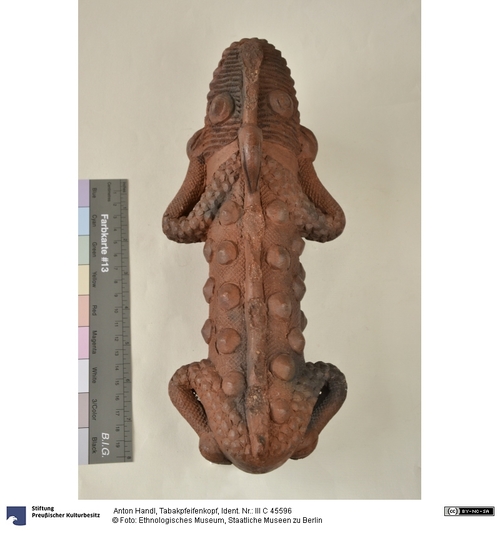Dieser Pfeifenkopf aus gebranntem Ton stellt einen Krokodil dar. Er wurde Anfang des 20. Jahrhunderts im Königreich Bamum im Kameruner Grasland hergestellt. Um 1900 rauchten Könige, Würdenträger und Familienoberhäupter im Grasland von Kamerun Tabak. Je höher der Rang des Rauchers war, desto prachtvoller sollte die Pfeife sein und im Königreich Bamum waren Krokodile symbolisch besonders eng mit dem König verbunden.
Der Pfeifenkopf wurde zwischen 1903 und 1914 von dem Arzt Anton Handl gesammelt. Handl diente zwischen 1903 und 1913 als Arzt in der sog. Deutschen Schutztruppe für Kamerun. 1909 erwarb das Ethnologische Museum zwei ähnliche Tabakspfeifenköpfe: einen größeren von Herrn Thorbecke (III C 28973) und einen kleineren von Herrn Ankermann (III C 25572). (JF 03.01.2017)
Sammler: Handl, Anton
en

